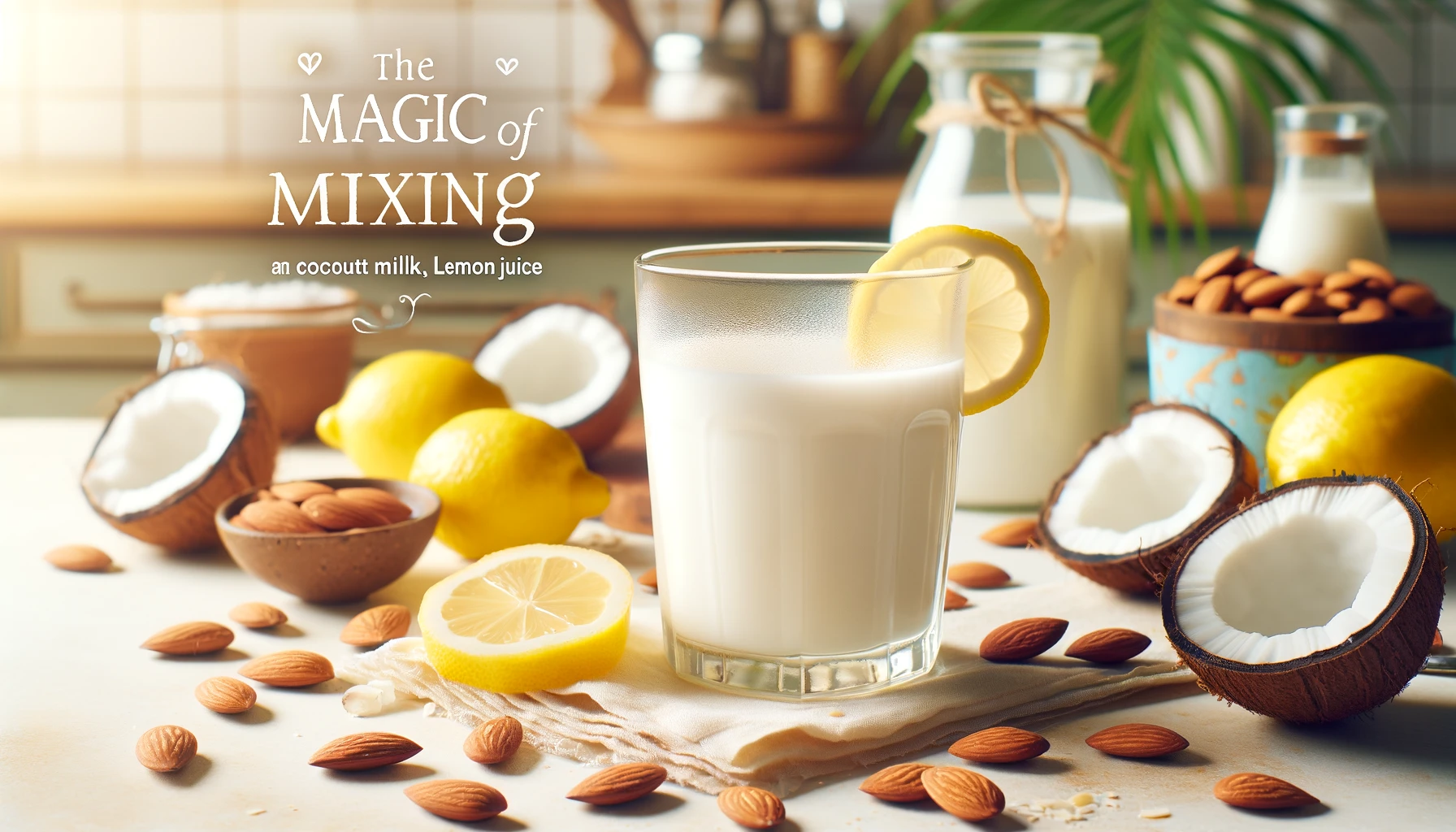Exploring the Magic of Almond Milk, Coconut Milk, and Lemon Juice
The culinary world is an arena of endless experimentation and fusion, and the combination of almond milk, coconut milk, and lemon juice is no exception. Each of these ingredients brings its unique characteristics and health benefits, making their combination a topic of both culinary and nutritional interest.
The Science of Mixing: A Flavorful Symphony
When almond milk, a nutty, plant-based alternative to traditional dairy, meets the rich, creamy texture of coconut milk, the result is a delightful blend of flavors. The addition of lemon juice, with its tartness, not only adds a zesty twist but also causes a chemical reaction. The acidity of lemon juice can slightly curdle the mixture, changing its texture and potentially enhancing its flavor profile.
Health in a Glass: The Nutritional Perspective
| Ingredient | Health Benefits |
|---|---|
| Almond Milk | Rich in vitamins, low in calories, dairy-free |
| Coconut Milk | High in MCTs, supports heart health |
| Lemon Juice | Rich in vitamin C, aids digestion |
Almond milk is appreciated for its low-calorie profile and richness in vitamins, making it a great dairy-free alternative. Coconut milk, a staple in tropical cuisines, is not only delicious but also a nutritional powerhouse, rich in medium-chain triglycerides (MCTs) which are beneficial for heart health. Lemon juice, on the other hand, is celebrated for its high vitamin C content and its ability to aid in digestion.
Culinary Creations: From Beverages to Baking
The fusion of almond milk, coconut milk, and lemon juice opens up a plethora of culinary possibilities. From refreshing beverages to innovative baking recipes, this combination can be the star of many dishes. For instance, a tropical smoothie or a vegan lemon coconut cake could be delightful ways to harness the unique flavors and textures of these ingredients.
Cultural and Culinary Fusion
This mixture is more than just a combination of ingredients; it’s a fusion of different culinary traditions. Almond milk, popular in Western vegetarian and vegan diets, meets coconut milk, a cornerstone in Asian and tropical cuisines, creating a blend that transcends cultural boundaries. The addition of lemon juice, widely used in various cuisines around the world, adds an extra layer of universality to this mix.

The Alchemy of Ingredients: Understanding the Chemistry
When almond milk, coconut milk, and lemon juice come together, a fascinating chemical reaction occurs. The acid in lemon juice interacts with the other milks, potentially causing them to thicken or curdle slightly. This reaction can be both a culinary challenge and an opportunity, depending on the desired outcome of the recipe.
A World of Flavor Profiles
| Ingredient | Flavor Profile |
|---|---|
| Almond Milk | Nutty, mildly sweet |
| Coconut Milk | Rich, creamy, tropical |
| Lemon Juice | Bright, acidic, tangy |
The combination of these diverse flavor profiles can result in a complex and intriguing taste experience. The nuttiness of almond milk, the tropical richness of coconut milk, and the tangy zest of lemon juice can create a symphony of flavors that can enhance various dishes.
Cooking and Baking Adventures
This unique blend of almond milk, coconut milk, and lemon juice isn’t just for beverages. It can be a fantastic addition to various cooking and baking recipes. The mixture can be used as a base for exotic soups, sauces, and even as a marinade for meats or tofu. In baking, it can add moisture and flavor to cakes, muffins, and other sweet treats. Creative cooks can experiment with this blend to bring a touch of tropical flair to their dishes.
Experimentation and Innovation in the Kitchen
The realm of cooking is all about experimentation and innovation. This combination of ingredients invites culinary enthusiasts to explore and create new recipes. Whether it’s developing a new smoothie recipe, a dairy-free dessert, or a savory sauce, the possibilities are endless. By understanding the properties of each ingredient, cooks can harness their best qualities and create dishes that are not only delicious but also visually appealing and nutritious.
The Intersection of Nutrition and Taste
The mixture of almond milk, coconut milk, and lemon juice is not only a culinary delight but also a nutritionist’s interest. Each ingredient contributes unique health benefits, making this combination a healthy addition to any diet.
Nutritional Synergy: More Than Just Taste
The blend of these three ingredients can offer a synergistic effect, enhancing the nutritional value of each component. Almond milk provides vitamins and a low-calorie count, coconut milk offers beneficial fatty acids and hydration, and lemon juice adds a boost of vitamin C and digestive benefits. Together, they create a beverage that is as nutritious as it is delicious.
Dietary Considerations: A Versatile Choice
This mixture is an excellent choice for various dietary needs. It’s vegan, dairy-free, and can be gluten-free, making it suitable for a wide range of dietary preferences and restrictions. Its versatility also allows it to be incorporated into different meal plans, from weight management to heart-healthy diets.
The Role in Modern Diets
As people become more health-conscious and look for plant-based alternatives, this mixture fits perfectly into the modern dietary landscape. It’s a testament to how traditional ingredients can be reimagined to suit contemporary health trends and dietary preferences.

